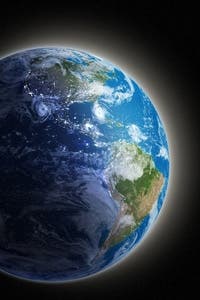One of the most outstanding dreams astronomers and other scientists hope to accomplish is to someday encounter proof that extraterestrial life exists. Intelligent life might be extremely far off, however microbiological life should without a doubt be present elsewhere other than our planet or solar system. For life to blossom, however, the right conditions have to be met, and one of the major prerequisites for life supporting conditions is liquid water. Along the years, scientists have come up with what’s called the habitable zone, an area around a star’s orbit where favorable conditions for harboring life may exist. Now, after hundreds of potential Earth-life planets have been found, scientists have enough data at their disposal to elaborate a statistical hypothesis – there are billions of planets similar to Earth that might potentially support life in our galaxy alone!

Astronomers using the European Southern Observatory’s HARPS, a high precision instrument fitted to the 3.6m telescope at the Silla Observatory in Chile, studied 102 red dwarf stars neighbouring the sun over a period of six years. Red dwarfs are smaller and cooler than the sun, however it’s been found that 40% of red dwarf stars may have Earth-sized planets orbiting them that have the right conditions for life.
“Our new observations with Harps mean that about 40% of all red dwarf stars have a super-Earth orbiting in the habitable zone where liquid water can exist on the surface of the planet,” said team leader Xavier Bonfils from the Observatoire des Sciences de l’Univers de Grenoble, France.
“Because red dwarfs are so common – there are about 160 billion of them in the Milky Way – this leads us to the astonishing result that there are tens of billions of these planets in our galaxy alone.”
During their survey, the group of astronomers found a total of nine super-Earths, planets with a rocky structure that have a mass up to ten times that of Earth, while two such planets are orbiting inside their stars’ habitable zones. Extrapolating with data gathered from non-dwarf stars were super-Earths have also been found, the scientists were able to produce an estimate for how common different sorts of planets are around red dwarf.
Huge planets, the size of Jupiter for instance, have been found to orbit in less than 12% of red dwarfs, suggesting their much rarer than small rocky words, like the Earth. Alright, but why should we care if there’s another potential Earth out there if its thousands of light years away? Well, the scientists found that there could be at least 100 super-Earths’ orbiting in the habitable zones of their stars, located in a radius 30 light years away from our own sun. That’s not that far at all, in the astronomical scale.
The group’s findings were reported in the journal Astronomy and Astrophysics.
[image source]


